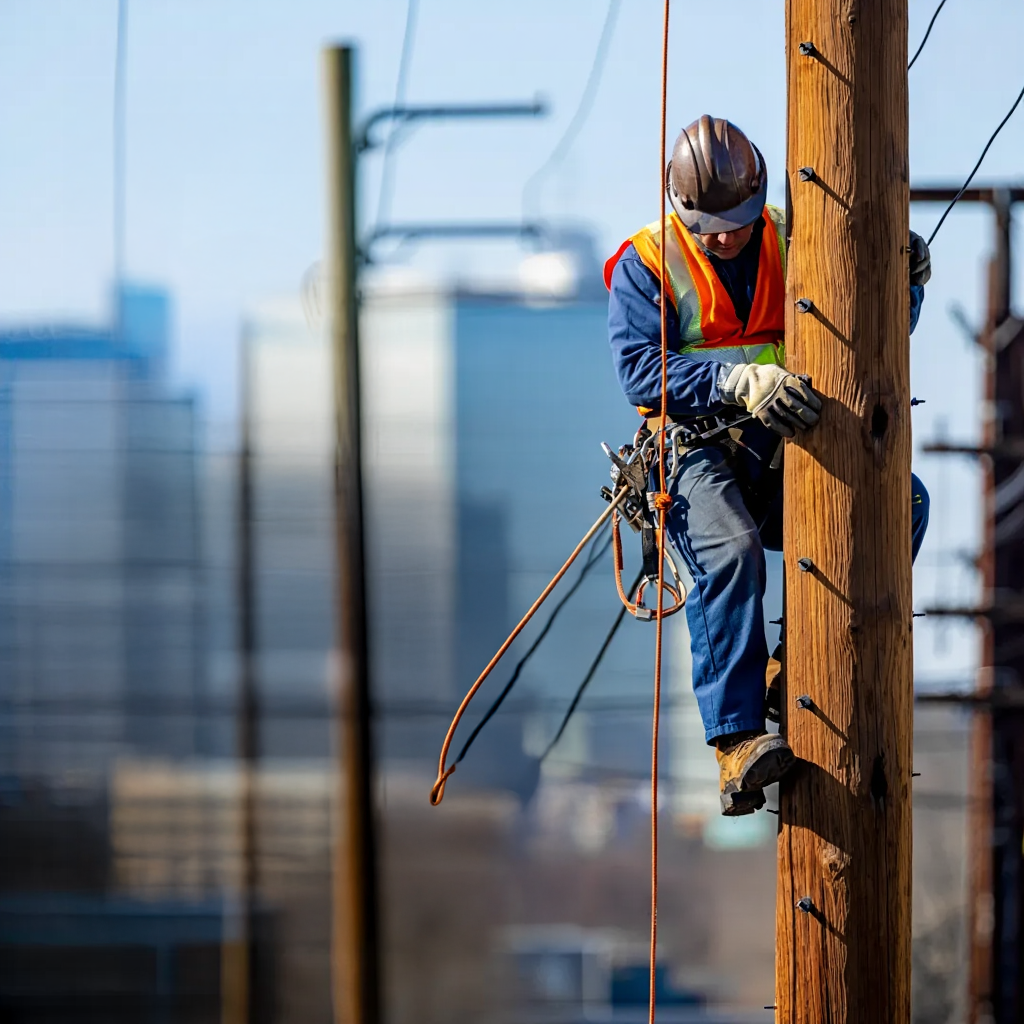Keeping a workplace safe isn’t a one-time task—it’s an ongoing battle. Hazards shift. Teams rotate. Regulations evolve. And while your safety manual might look great on paper, what really matters is what’s happening on the ground.
That’s where workplace safety audits come in.
A workplace safety audit is more than a checklist—it’s your best shot at finding the cracks before they turn into catastrophes. Done right, it exposes hidden hazards, tests your systems under pressure, and proves your commitment to the people who trust you to get them home safe.
And in today’s environment, that’s not optional.
With OSHA tightening enforcement, ISO 45001 raising the global bar for safety systems, and state agencies demanding more transparency, the cost of falling behind is real. We’re not just talking fines—we’re talking downtime, injuries, lawsuits, and reputation damage you can’t scrub off.
But let’s be honest: auditing is hard.
Manual inspections take time. Paper checklists get lost. Documentation falls through the cracks. And by the time a near miss turns into an incident, it’s already too late.
That’s why smart safety teams are turning to automation.
Modern tools like Field1st make it possible to digitize audits, track compliance in real time, flag risks before they escalate, and keep every record ready for when OSHA—or your CEO—comes knocking.
In this guide, we’ll walk you through:
- What a workplace safety audit is
- Why it matters (way beyond forms and fines)
- Step-by-step instructions for doing it right
- The biggest mistakes safety teams make—and how to avoid them
- How platforms like Field1st can simplify and strengthen the entire process
Let’s dig in.
What is a Workplace Safety Audit?
A workplace safety audit is a systematic review of an organization’s safety policies, procedures, systems, and physical conditions. The goal? Identify risks, ensure compliance, and uncover opportunities to improve the safety of your workforce.
Don’t confuse audits with inspections:
- Inspections are tactical: checking fire extinguishers, PPE, ladder condition.
- Audits are strategic: assessing whether your entire safety system works as intended.
Types of Safety Audits:
- Internal Audits
These are conducted by your internal safety team or designated personnel. The goal is to proactively identify weaknesses in current safety protocols, spot potential risks, and assess whether procedures are being followed. Internal audits also help prepare for larger external or compliance-focused audits by revealing gaps before they’re exposed by regulators. - External Audits
Performed by third-party consultants, certifying bodies, or regulatory agencies, external audits provide an unbiased assessment of your workplace safety program. They’re often required for certifications or contract qualifications and can be crucial in legal defense if an incident occurs. - Regulatory Compliance Audits
These focus strictly on your alignment with laws such as OSHA standards, ISO 45001, and state-specific regulations. Missing even minor requirements can lead to costly fines or work stoppages, which is why many companies now use automated tools to stay audit-ready at all times. - Operational Safety Audits
These evaluate what’s really happening on the ground—how safety procedures are being executed, how workers are behaving, and whether policies are effective in practice, not just on paper. It’s a reality check for leadership to see if their safety plans hold up under pressure.
Why Conduct a Workplace Safety Audit?
Most companies audit to stay out of trouble. But the real value goes far beyond compliance, it touches every layer of operations, culture, and profitability.
1. Stay Compliant
Safety audits help ensure your organization is aligned with OSHA, ISO 45001, and local regulatory frameworks. Staying compliant isn’t just about avoiding citations—it keeps your workforce protected and your projects running without legal disruption or PR fallout.
2. Identify Hazards Before They Harm
Audits give you structured visibility into unsafe conditions, faulty equipment, and behavioral risks that may otherwise go unnoticed. You can’t fix what you don’t see—and audits give expanded visibilty.
3. Build a Safety-First Culture
When audits are routine, safety becomes part of the job, not an afterthought. Employees are more likely to report hazards and follow protocols when they see leadership actively engaged in the process.
4. Save Money
Every incident avoided saves your company on medical costs, claims, and insurance premiums, not to mention avoiding delays and reputation damage.
5. Increase Efficiency
Audits spotlight areas of inefficiency, like outdated equipment, redundant processes, or training gaps. Fixing these improves productivity and reduces risk simultaneously. Safety and efficiency go hand in hand.
Key Components of a Workplace Safety Audit
A good audit doesn’t just look around—it digs deep into how your safety program functions day-to-day. It’s not just about spotting hazards—it’s about assessing systems, behaviors, preparedness, and accountability. Here’s what every comprehensive safety audit should include:
1. Hazard Identification
Physically inspect the site, observe workflows, talk to frontline workers, and review incident logs. Look for environmental risks (poor lighting, slippery surfaces), operational hazards (unguarded machinery, improper lifting), and human factors (fatigue, complacency).
2. Compliance Checks
Assess whether your practices align with OSHA standards, ISO 45001 frameworks, and local laws. Track gaps between policy and practice—and whether documentation supports your compliance claims.
3. Employee Training & Awareness
Evaluate whether employees understand procedures, can identify hazards, and know how to respond. Confirm participation in toolbox talks, drills, and ongoing safety training.
4. Emergency Preparedness
Verify that emergency protocols are clearly posted, accessible, and tested. Are exits unblocked? Are evacuation maps visible? Are spill kits and first-aid stocked and ready?
5. PPE & Equipment Inspection
Ensure tools and PPE are in good working order, properly stored, and regularly maintained. Check for missing, expired, or damaged gear that puts workers at risk.
6. Incident Reporting & Documentation
Confirm there’s a consistent process for logging incidents and near-misses, and that corrective actions are documented and followed up on. Audits are useless if issues don’t lead to action.
Field1st simplifies this entire process. With digital checklists, real-time hazard reporting, and centralized documentation, it helps ensure nothing gets missed—and everything gets fixed.
How to Conduct a Workplace Safety Audit (Step-by-Step)
You don’t need to reinvent the wheel—but you do need a structured process.
Step 1: Define the Audit Scope
Are you reviewing a specific site, process, or department? Will your focus be on regulatory compliance, operational safety practices, or both? Identify key areas like worksite conditions, employee training programs, and emergency preparedness. Align your scope with OSHA standards, ISO 45001, and internal safety policies. A clearly defined scope ensures your audit is focused, relevant, and actionable—leading to sharper insights and faster, more effective follow-through. Don’t audit everything—audit what matters most.
Step 2: Gather & Review Existing Data
(Past audits, incident logs, OSHA reports)
Start with what you know. Review prior audit results, incident reports, safety checklists, and any OSHA-related documentation. Look for recurring issues, unresolved hazards, or trends in specific departments. Field1st’s automated tracking system centralizes all historical safety data—giving teams instant access to everything they need in one place. This level of visibility helps safety leaders identify patterns, prioritize risk areas, and make smarter decisions before the first walkthrough even begins. The more informed your starting point, the more targeted and effective your audit will be.
Step 3: Conduct On-Site Inspections
This is where theory meets reality. Inspect physical conditions, equipment, and employee adherence to safety protocols. Look beyond the checklist—observe how teams actually work. Engage employees directly; they often spot risks supervisors miss. With Field1st, teams can log hazards, capture photos, and submit detailed reports from any device—even offline. This real-time, mobile-first approach ensures nothing is overlooked, and every issue is documented immediately while still on-site. By turning every worker into a safety observer and giving them the tools to act instantly, you create a culture where accountability and awareness are part of the daily routine—not just the audit.
Step 4: Engage the Team
Interview workers, gather feedback on near misses, and involve them in identifying risks—they’re your first line of defense. Once findings are collected, log every hazard, compliance gap, and improvement area clearly. Field1st streamlines this process by automating corrective action tracking—assigning tasks, setting deadlines, and sending reminders to ensure issues don’t get buried. This not only boosts accountability but also accelerates resolution timelines. By giving employees a voice and using a centralized system like Field1st to track follow-through, safety becomes a shared responsibility—and progress becomes measurable. When workers see their input leads to action, engagement and trust skyrocket.
Step 5: Document Everything & Assign Corrective Actions
Log every hazard and violation clearly. Prioritize based on severity, frequency, and potential impact. Assign responsibilities with firm deadlines. Field1st automates this entire workflow—from assigning corrective actions to tracking their completion. But it doesn’t stop there. Its real-time reporting dashboard provides management with instant visibility into what’s been resolved, what’s overdue, and what’s falling through the cracks. This enables teams to measure progress, identify recurring issues, and maintain momentum after the audit ends. With Field1st, audit data becomes actionable, follow-up becomes routine, and safety gaps get closed—fast.
Step 6: Generate the Audit Report
A strong audit report should clearly summarize key findings, outline corrective actions, and set clear follow-up timelines. Include supporting visuals like photos, trend graphs, or heatmaps to enhance clarity. Field1st makes this process seamless—its real-time reporting engine compiles all your data into professional, presentation-ready formats instantly. Leadership can view open issues, completed tasks, and high-risk trends across projects—all from one dashboard. These reports not only ensure transparency and accountability but also empower management to make smarter, faster safety decisions. With Field1st, your audit doesn’t end with a checklist—it fuels continuous improvement.
Step 7: Monitor Progress & Stay Accountable
Audits aren’t “one-and-done.” Their value comes from what happens next. Set review dates, follow up on assigned actions, and update safety protocols as conditions evolve. Field1st keeps the momentum going with real-time dashboards that track task status, highlight overdue items, and send automated reminders. Managers can quickly see what’s been resolved, what still needs attention, and who’s responsible—ensuring nothing slips through the cracks. This level of visibility turns audits into living systems of continuous improvement, not forgotten paperwork. Accountability becomes embedded in your process, and safety performance stays on track long after the initial walkthrough.
Common Challenges in Workplace Safety Audits (And How to Fix Them)
Even high-performing teams hit friction when it comes to audits. Here are the five most common issues—and how to eliminate them for good.
1. Manual, Time-Consuming Audit Processes
The Challenge:
Pen-and-paper inspections. Excel checklists. Disconnected systems. These outdated methods slow everything down, introduce human error, and bury insights in paperwork.
The Fix:
Digitize your audit workflow. Use mobile-friendly tools like Field1st to log findings in real-time—onsite, offline, or on the move. Audits become faster, cleaner, and fully traceable. No more chasing down lost forms or waiting three days to hear about a safety gap.
2. Keeping Up With OSHA, ISO 45001, and Local Regulations
The Challenge:
Regulatory standards shift constantly. OSHA updates. ISO revisions. State-level changes. If your system isn’t actively tracking these updates, you’re already behind.
The Fix:
Use a platform like Field1st that keeps your audit templates aligned with current standards. Automated reminders, built-in compliance fields, and real-time regulatory updates ensure your team doesn’t miss a beat—or a deadline.
3. Proactive Hazard Identification (Before It’s Too Late)
The Challenge:
Most companies wait until something breaks before they fix it. That reactive mindset leaves hazards lurking and risks growing.
The Fix:
Implement routine risk assessments and structured audits—but amplify them with smart tech. Field1st uses predictive analytics and AI-powered hazard detection to flag high-risk trends across jobsites—before they become incidents. It’s like having a second set of eyes on every crew, 24/7.
4. Employee Resistance or Low Engagement
The Challenge:
Crews often see audits as time-wasters or micromanagement. That lack of buy-in kills reporting rates and hides frontline risks.
The Fix:
Make safety a two-way conversation. Let field teams contribute using intuitive mobile tools. Encourage hazard reporting, close the loop on feedback, and celebrate safe behavior. Field1st gives employees an easy, accessible way to speak up—and shows them it matters.
5. Inconsistent Documentation and Follow-Through
The Challenge:
Audits reveal problems. But without a system to assign, track, and resolve them? Nothing changes. You end up with a binder full of good intentions and no accountability.
The Fix:
Standardize your audit templates. Digitize your reports. Assign corrective actions instantly through Field1st, complete with deadlines, reminders, and status tracking. Live dashboards make it easy to monitor progress and escalate overdue items. No more “dropped balls.” Just clear accountability.
Workplace Safety Audits Made Easy with Field1st
If workplace safety audits feel like a burden—it’s because your tools are broken. Field1st was built by industry veterans who were tired of disconnected checklists, lagging spreadsheets, and audits that never translated to action.
Here’s what Field1st delivers:
- Automated audit scheduling
- Digital checklists and forms
- Real-time hazard reporting (even offline)
- Audit-ready reports with one click
- Centralized compliance tracking
- AI-powered risk detection
- Secure, timestamped documentation
Whether you’re managing one jobsite or 30, Field1st simplifies every part of the audit process—so safety teams can spend less time chasing paper and more time protecting people.
Final Thoughts
Workplace safety audits are more than just a compliance task—they’re a strategic lever to reduce risk, boost team morale, and drive operational excellence.
But to make them effective, they must be:
- Structured
- Consistent
- Actionable
- And tech-enabled
With Field1st, audits become less of a chore—and more of a command center for safety.
Ready to Level Up Your Audits?
If you’re still doing safety audits the old way, you’re not just behind—you’re at risk.
Trade clipboards for clarity.
Trade stress for structure.
Trade delays for data.
Book a demo with Field1st and see how we make workplace safety audits faster, smarter, and far more effective.





